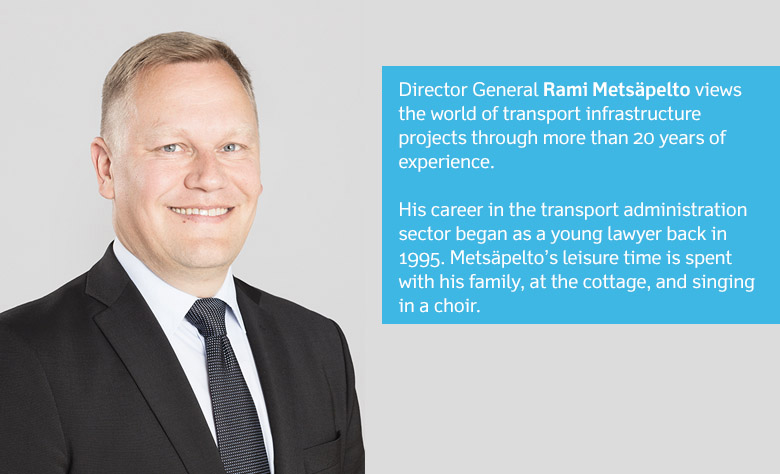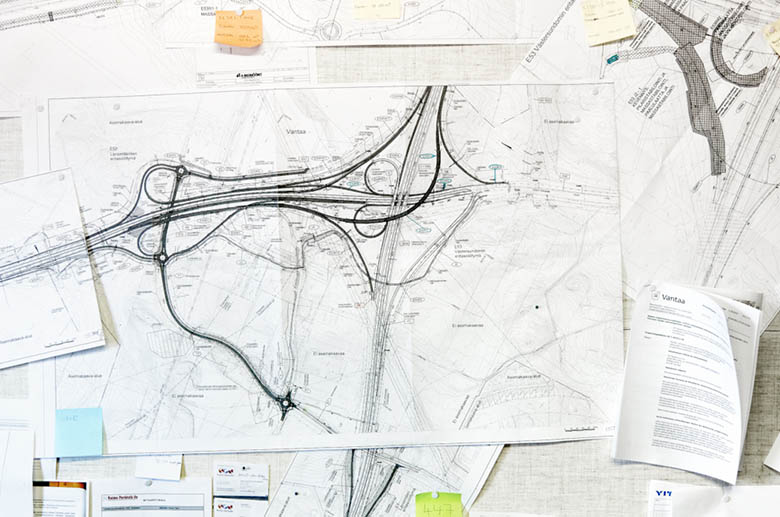In the summer of 2015, the Finnish Transport Agency restructured its organisation by creating a new division, Planning and Projects, which is tasked with transport system planning, the planning of road, railway and waterway projects, and the implementation of investments in development based on Parliamentary decisions.
“We had a good reason for doing this: the restructuring brought planning and implementation closer together. We also launched the restructuring of the planning process and content,” Rami Metsäpelto says.
In his new role as a director general, Metsäpelto, who has long worked for the Finnish transport authority, emphasises the importance of overall optimisation. The Finnish Transport Agency as an organisation has excellent capabilities for this now that the entire range of modes of transport is under one roof.
“Naturally, there is some need for improving the transport network within individual modes of transport. For example, the sufficiency of the carrying capacity of certain sections of the railway network needs to be ensured, and we need to continue with the electrification of key track sections and increasing axle weights. It causes unnecessary additional logistics costs to trade and industry when an electric locomotive is switched to a diesel locomotive midway,” says Metsäpelto.
According to Metsäpelto, as industrial investments in Finland are now looking brighter than they have been for a long time, it is the Finnish Transport Agency’s duty to ensure that the required infrastructure is in order by the time the construction of a mill or other type of investment is completed.
“In our view, more than anything else, our role is to act as an infrastructure partner and a provider of opportunities. With regard to the bioproduct mill in Äänekoski, for example, our goal has been to ensure that the transport infrastructure functions as well as possible throughout the chain, within the framework of the available funding.”

From small improvements to large investments
According to Metsäpelto, the transport system should be viewed from various perspectives and as an entity in which the key components are securing the competitiveness of Finnish industry and the mobility of Finnish people.
“Reforming the planning process emphasises the diversity of the methods necessary for accomplishing this.”
Metsäpelto also points out the importance of being able to influence land use.
“One of our key tasks is to influence land use and land use planning, which we do, for example, through our regional transport system and land use work, in such a way that unnecessary movementcan be avoided. In other words, we – like many other operators – aim to ensure that jobs and homes are located within a reasonable distance from each other,” Metsäpelto notes.
In the planning phase, the role of the Finnish Transport Agency is to act as a client in railway and waterway projects and to steer the work of the Centres for Economic Development, Transport and the Environment in road projects.
“Potential ways of improving the existing transport network include, for example, increasing the traffic throughput of a road or track and enhancing safety”. For example, the project for developing the railway section between Helsinki and Riihimäki involves building more tracks and changes to traffic points. This way, we can increase the rail transport supply in commuter traffic, reduce the incident sensitivity of transport provision, and improve punctuality. At the same time, we are creating preconditions for the intensification of land use by the main line.”
In Rami Metsäpelto’s opinion, it is important that all methods for developing transport conditions are taken into consideration in an open and unbiased manner.
“We are not doing this alone; there is a wide range of operators involved in this work. Long-term cooperation and active interaction are therefore important,” Metsäpelto concludes.
Text: Vesa Tompuri

